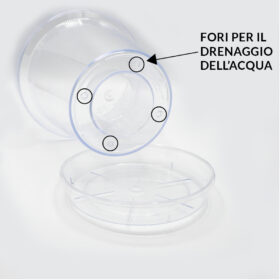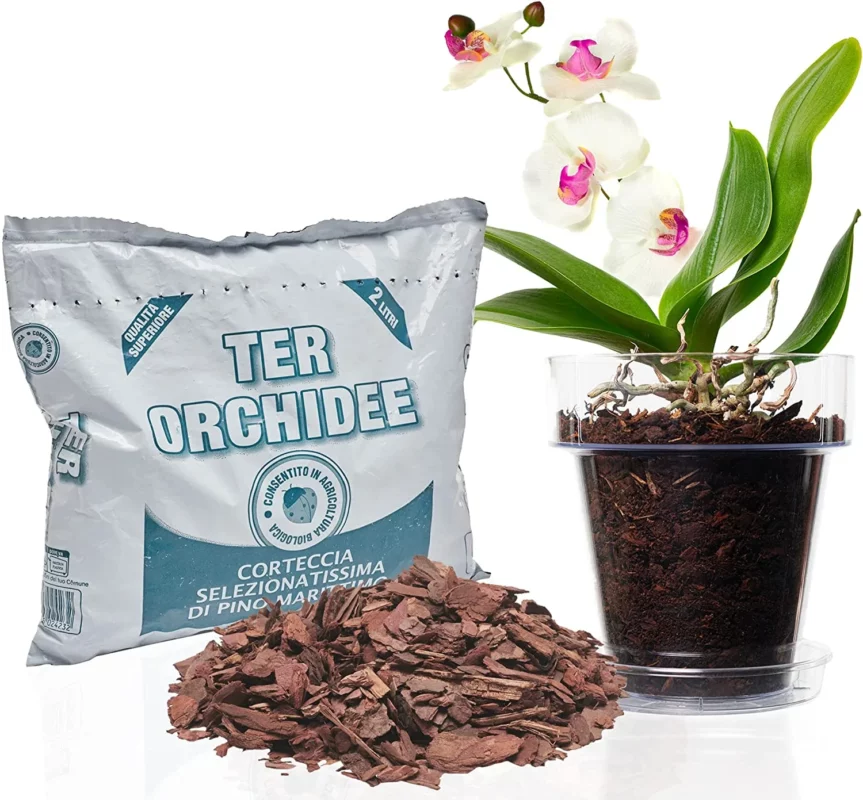WHEN TO REPOT ORCHIDS
The best time to repot orchids is autumn when the plants have lost their flowers or in spring by March-April.
A regular repot guarantees orchids good health. The substrate in which they develop loses important nutrients and in addition, the roots needs enough space to grow and to guarantee a rich flowering.
When to Repot a Plant: 6 Signs to Look For
- After flowering and when new roots or leaves grow.
- The roots and the plant itself start to overgrow and they have not enough space in the pot.
- The orchids fail to bloom or no buds are growing.
- The pot is broken.
- There is an insect infestation.
- The bark is too wet and it does not drain properly.
An important element to take into consideration when repotting an orchid is the choice of the pot.
Which is the right pot to choose for orchids?
Come prima cosa, assicurati che abbia i fori di drenaggio, questa scelta eviterà accumuli di acqua molto dannosi per le tue orchidee. La soluzione migliore prevede anche un rialzo interno, come quello dei vasi Kalapanta, in questo modo sarai certo che le radici non rimarranno mai a contatto con l’acqua.
Inoltre, scegliendo un vaso in plastica trasparente, le radici avranno la giusta luce naturale che permetterà un ottimo sviluppo dell’apparato radicale.

Lorem ipsum dolor sit amet...
Kalapanta pots’ plastic material is ecological, non-toxic and recyclable, it is very light and impact resistant. The surface of the pots has a glossy finish, it is resistant to UV and temperatures from -50 ° C to + 50 ° C, it is easily washable. A great choice for your orchid!
If you are not sure about the pot size, choose one that is at least one size larger than the current pot. If the pot is too large, the risk is that the plant focuses all its energy to the roots development rather than to the flowering. While if the pot is too small, the roots don’t have enough space to develop.
The substrate is the orchids best friend!
Orchids do not grow in the earth but need a specific substrate.

This organic bark is obtained with a careful mixture of maritime pine bark and a small percentage of blond peat, this satisfies the needs of all orchids such as high porosity, lightness, slow decomposition, organic nature. It guarantees structural stability to orchids, it is ideal for anchoring the plant and it ensures the right humidity to the roots.
This professional substrate is allowed in organic farming, it is certified and produced with innovative cultivation techniques in order to meet the needs of all types of orchids
Fertilizers: the best products
If you want, you can add orchid fertilizer to your plant, choose one for all orchid species: Cattleya, Cymbidium, Dendrobium, Odontoglossum, Paphiopedilum, Vanilla planifolia, Phalaenopsis.
The fertilizer is a natural aid for the plant growth. It increases the production of flowers and leaves, it helps flowering over time, it reduces the buds fall, it increases the resistance to environmental stress and diseases, with visible results in a few days.


 Italiano
Italiano